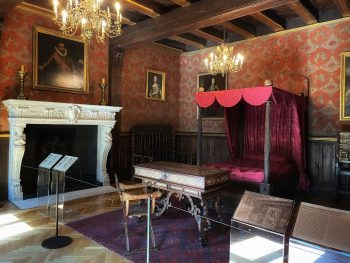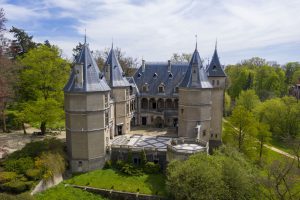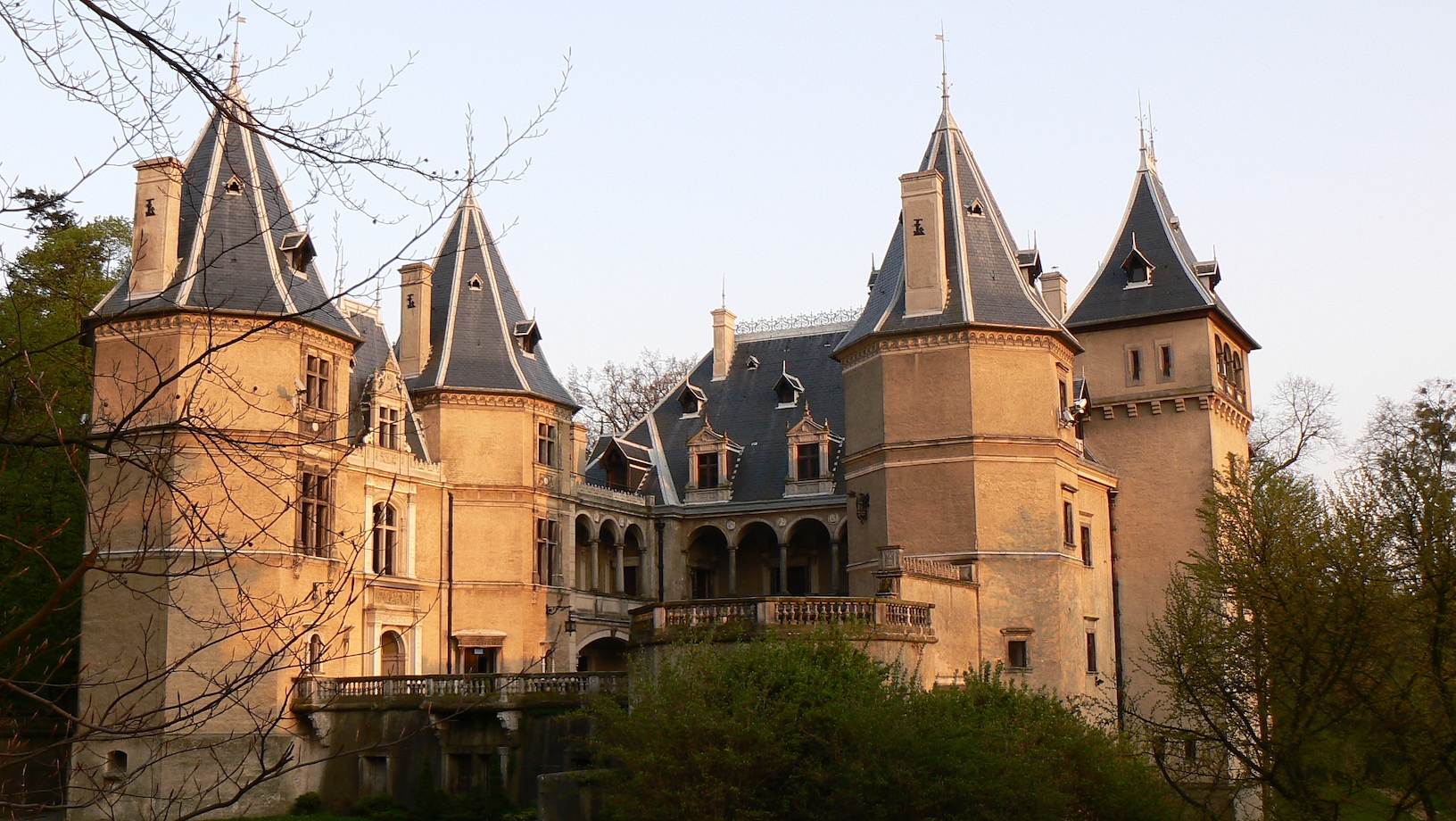The history of the castle rising above the Trzeń River in Gołuchów is over 400 years old. The castle’s silhouette—after its 19th-century restoration—appears to have a uniform French Renaissance character, but in reality its current shape is the result of three phases of construction. Hidden below the courtyard terrace are the oldest fragments of the castle—cellars from the second half of the 16th century—along with the foundations of the belvedere and three towers visible from the courtyard, which are the only remnants of the defensive dwelling erected around 1560 by the Radziejów Starost, the Brześć Kujawski-Brześć Kujawski Voivode, and the Reformer’s Protector, Rafał Leszczyński. The second phase of construction is associated with Rafał’s son, Wacław Leszczyński, the Kalisz Castellan, the Great Crown Chancellor, and the Kujawsko-Pomorski Voivode. He inherited Gołuchów in 1592 and in the early 17th century transformed it into a magnificent magnate residence.
In 1853, Tytus Działyński, the owner of the Kórnik estates, purchased the Gołuchów estate for his only son, Jan. In 1857, Jan Działyński married Izabella, the daughter of Prince Adam Jerzy Czartoryski, the leader of the émigré Hotel Lambert faction.
With the aim of renovating the castle, Isabella brought artists from France, among them the architect Maurycy August Ouradou, the sculptor Karol Biberon and the painter Ludwik Breugnot. The famous royal castles of the Loire served as a model for the architectural implementation, which is why today we can admire in Gołuchów the characteristic high, slate-covered roofs, slender chimneys and sculptural decorations typical of these 16th-century French Renaissance buildings. During the work, which lasted several years, many details from the Leszczyński period, both external and internal decoration, were restored.
Izabella Czartoryska Działyńska’s intention was to create in the rebuilt castle not only a residence, but also a museum. Izabella died in 1899 in France, but she was buried in Gołuchów, in the newly renovated chapel located on the park grounds. Six years before her death, she established the Princes Czartoryski Family Estate in Gołuchów. In her statute, she guaranteed the general availability of her collections and their indivisibility. This private museum functioned uninterruptedly until September 1939. The Second World War became a tragedy for Izabella Działyńska’s collection. The collections looted by the Nazis were taken away, many exhibits were destroyed, others disappeared. The surviving part of the collection returned to Poland in 1956 from the former Soviet Union.
In 1951, the castle was taken over by the National Museum in Poznan, whose merit is the twice-conducted comprehensive conservation works, aimed at removing the damage caused from 1939 to 1951. The new landlord equipped the castle rooms with its own collections, including magnificent tapestries, Renaissance European painting, rare pieces of furniture, and a collection of artistic crafts. Over time, artifacts from Izabela Działyńska’s collection are returning to Gołuchów. Currently, you can see part of the old collection of antique vases, paintings by Polish and Western European artists, and some of the furniture from the old castle furnishings.

















